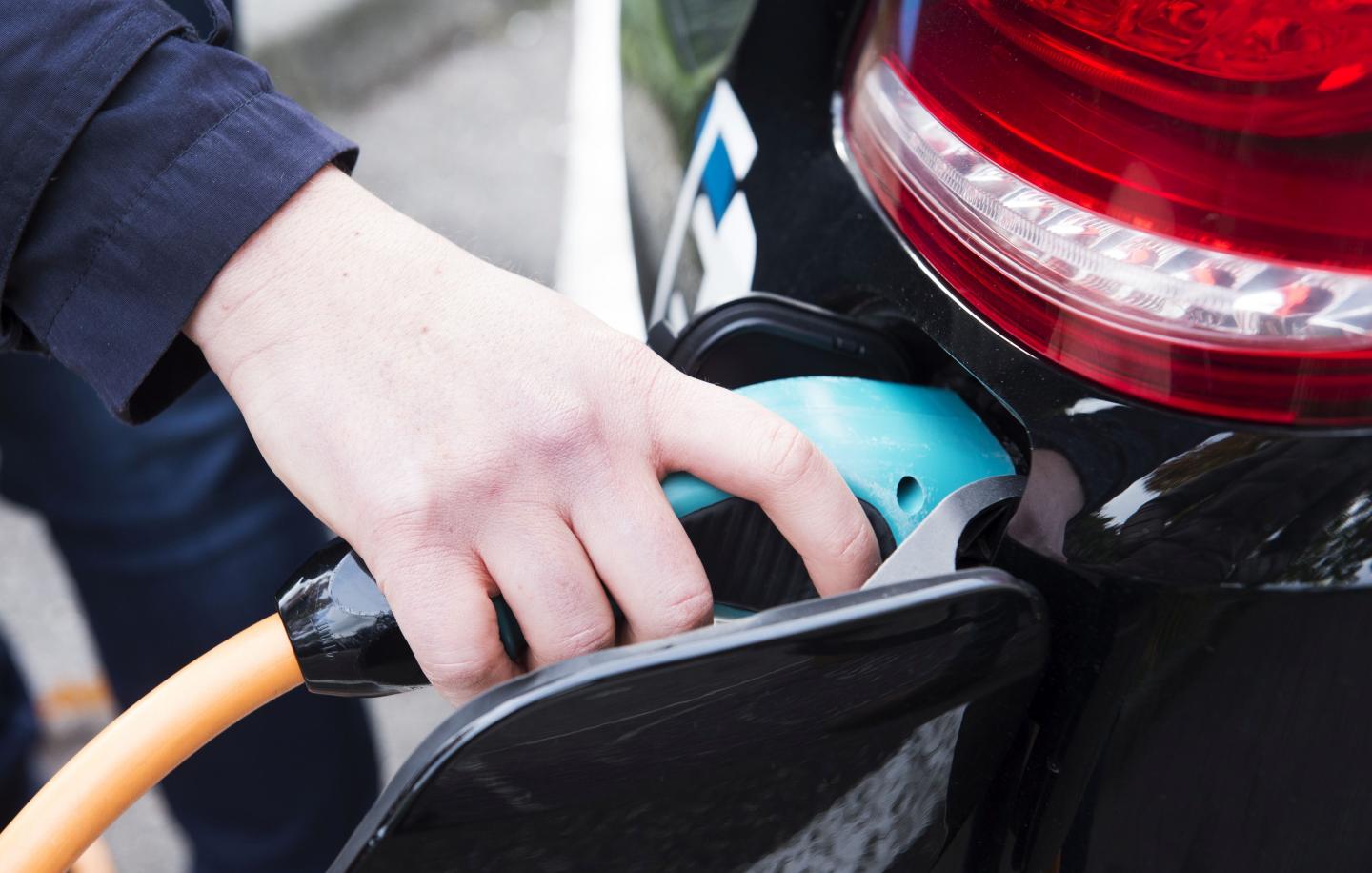Study compares mobility scenarios and helps with strategic decisions

Credit: Sandra Goettisheim
Autonomous driving, electromobility, synthetic fuels: the mobility in our world is changing rapidly. Small and medium-sized enterprises (SMEs) in Baden-Württemberg are supported in this transformation by the “Technologiekalender Strukturwandel Automobil Baden-Württemberg” initiative. This technology calendar for structural change in automotive for Baden-Württemberg was co-developed by scientists from Karlsruhe Institute of Technology (KIT). It describes how key automotive technologies might develop until 2035, and assists companies in identifying future-oriented products and business segments, in systematically building up expertise in order to remain competitive.
The technology calendar compares mobility scenarios based on different drive technologies: One scenario focuses on battery-electric drives for electric cars, a second one on hydrogen-based fuel cell drives, and a third one on synthetic fuels for vehicles with combustion engines. The study uses maturity levels in technology and manufacturing to describe which modules and systems will be relevant to the various types of drives by 2035. There are two other scenarios, where the researchers look at how quickly networked and autonomous driving might become a reality and how vehicle equipment and user behavior develop with it.
“Through the technology calendar, we give SMEs recommendations on how they can use existing skills in research, development, and production in a targeted manner for new offers,” says Sascha Ott, Managing Director of the KIT Mobility Systems Center. “Especially for Baden-Württemberg companies, we see great potential for value creation with regard to their high level of product and manufacturing expertise.” This includes, for example, metal-plastic jointing technology, the development of heavy-duty plastics, and lightweight constructions for innovative drive elements.
Profiles help SMEs identify and evaluate trends
The scientists use roadmaps and technology profiles to illustrate which technologies will become established when, and which skills SMEs will require for being at the forefront. “With the technology calendar, which has been co-developed by KIT, we can identify and evaluate recommended actions for new and future-oriented products,” says Florian Marthaler from IPEK (Institute of Product Engineering) of KIT. “Methodologically, we relied on a Delphi study, which is a systematic, multi-stage survey procedure that enables us to assess future trends, technical developments and the like as objectively as possible.”
Researchers of the KIT Mobility Systems Center identified technology trends with a focus on electrification and hybridization of conventional powertrains, high-speed transmissions, and modular solutions. “We were able to show that it is enormously important for SMEs to build up expertise, especially in the field of clutches and gearboxes for electric drives. This applies to development, design and validation alike,” says Ott.
The German Aerospace Center (DLR) coordinates the study that was developed jointly with KIT, the IMU Institute (a work-related research and consulting institution), and the Center for Solar Energy and Hydrogen Research Baden-Württemberg (ZSW). The Ministry of Economics, Labor and Housing of the State of Baden-Württemberg funded the project within the scope of an initiative called Strategiedialog Automobilwirtschaft (SDA) Baden-Württemberg (strategic dialog within the Baden-Württemberg automotive industry). This is an initiative where KIT is involved in a number of other research projects.
###
For more details, see: http://www.
More about the KIT Mobility Systems Center: http://www.
Being “The Research University in the Helmholtz Association”, KIT creates and imparts knowledge for the society and the environment. It is the objective to make significant contributions to the global challenges in the fields of energy, mobility, and information. For this, about 9,300 employees cooperate in a broad range of disciplines in natural sciences, engineering sciences, economics, and the humanities and social sciences. KIT prepares its 24,400 students for responsible tasks in society, industry, and science by offering research-based study programs. Innovation efforts at KIT build a bridge between important scientific findings and their application for the benefit of society, economic prosperity, and the preservation of our natural basis of life. KIT is one of the German universities of excellence.
This press release is available on the internet at http://www.
Media Contact
Monika Landgraf
[email protected]
Original Source
https:/





